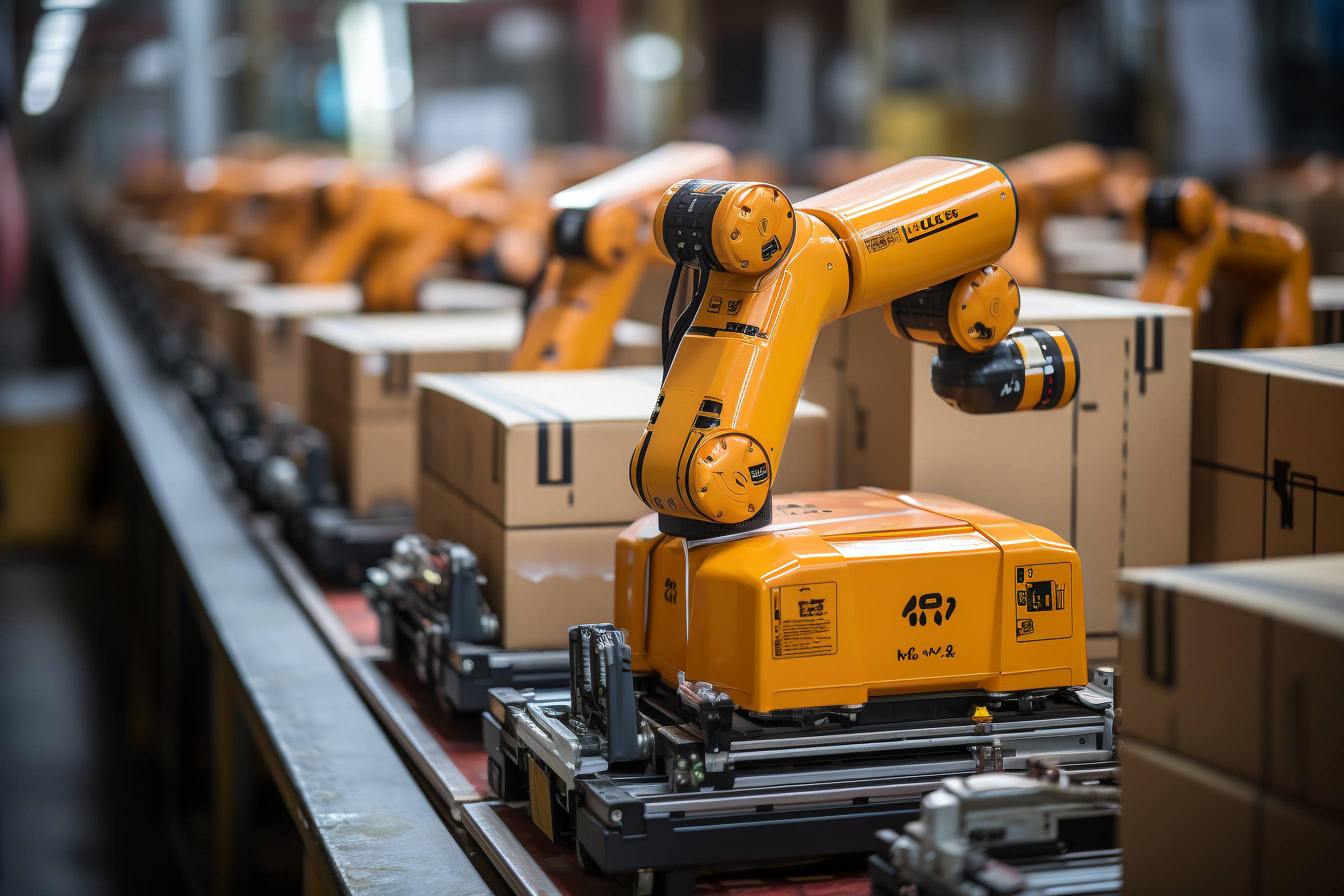In the realm of material handling and warehouse automation, palletizing is a critical process that involves arranging products onto pallets for storage or transportation. Traditionally, this task has been carried out manually, but with the advent of technology, robotic palletizing has emerged as a transformative alternative.
Introduction of Traditional Palletizing
Traditional palletizing involves manual labor to stack products onto pallets. Workers follow predetermined patterns and use physical strength and precision to arrange items efficiently. This method has been the go-to approach for decades, offering a straightforward solution to the palletizing process.
Introduction of Robotic Palletizing
Robotic palletizing employs automated systems, often using industrial robots equipped with advanced end-of-arm tools (EOAT). These robots are programmed to handle a variety of products and follow specific patterns for stacking. The process is guided by sensors and vision systems, allowing for adaptability to different products and configurations.
Differences
- Labor Dependence
A. Traditional: Requires manual labor for the entire process.
B. Robotic: Minimizes or eliminates the need for manual intervention, reducing labor costs.
- Flexibility
A. Traditional: Limited flexibility and adaptability to changes in product types or stacking patterns.
B. Robotic: Highly flexible, easily reprogrammable for various products, and capable of handling diverse stacking requirements.
- Speed and Efficiency
A. Traditional: Relies on the speed and endurance of human workers.
B. Robotic: Offers consistent and high-speed performance, leading to increased efficiency and throughput.
- Occupational Safety
A. Traditional: Involves manual labor, exposing workers to potential injuries and ergonomic issues.
B. Robotic: Enhances workplace safety by automating repetitive and physically demanding tasks.
Comparative Analysis
- Accuracy and Precision
A. Traditional methods may be prone to human errors, leading to misaligned or unstable pallets.
B. Robotic palletizing ensures precise placement, reducing the risk of errors and optimizing load stability.
- Adaptability
A. Traditional methods struggle with adapting to changes in product dimensions or stacking patterns.
B. Robotic palletizing excels in adapting to variations, making it suitable for industries with diverse product lines.
- Cost Considerations
A. Traditional methods may have lower upfront costs but can incur higher long-term labor expenses.
B. Robotic palletizing involves higher initial investment but offers long-term cost savings through increased efficiency and reduced labor costs.
While traditional palletizing methods have long been the norm, the rise of robotic palletizing signifies a transformative shift in the industry. Robotic palletizing brings efficiency, precision, and adaptability to the forefront, addressing limitations inherent in traditional approaches. As technology continues to evolve, businesses must weigh the upfront investment against long-term benefits when deciding between traditional and robotic palletizing methods.
If you would like to learn more about our robotic products and solutions, please feel free to leave a message or call us for consultation. Email is [email protected]. Also you can add our WhatsApp +86 181 1289 9721.






